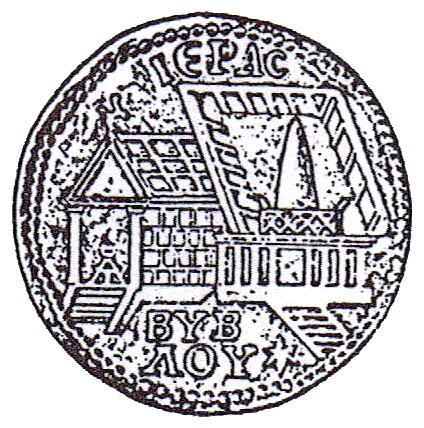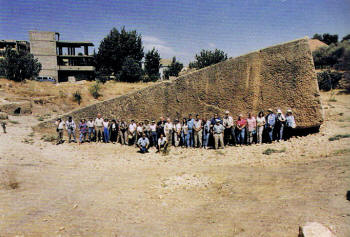|
by Zecharia Sitchin 2006 from Sitchin Website
The name of an ancient site – Ba’albek in Lebanon – has now been mentioned in dispatches by war correspondents covering the latest flareup in the Middle East. Israeli planes have been dropping bombs there on training and supply encampments of Hezbollah terrorists, in a tit-for-tat for the latter’s missile attacks on Israel.
Some of the dispatches refer to the
town’s “Roman ruins” - remains of temples that Roman emperors
erected in honor of Rome’s gods; but little, if any, mention is made
of the place’s earlier and much more significant archaeological
remains.
The Greeks came because the place was deemed a unique sacred site by the Phoenicians and the Babylonians before them; and before all those generals and emperors and kings, Gilgamesh, king of Uruk in ancient Sumer, went there circa 2900 B.C. to obtain immortality from the gods.
As this depiction shows, the launch
facility was located on a great platform; and indeed, the truly
ancient site of Baalbek encompassed a paved stone platform of about
five million square feet!
(By comparison, the stone blocks of the Great Pyramid in Giza, Egypt, weigh about 25 tons each).
These are far from being the largest stone blocks there. As described in my latest illustrated book The Earth Chronicles Expeditions, the ever-rising layers of these stone blocks form, in the northwestern corner, a funnel-like stone tower.
The western wall of that tower-like structure has been reinforced with rows (“courses”) of stone blocks weighing 900 tons each. On top of them, another higher course is made up of three unique stone blocks weighing 1,100 tons each.
Known as the Trilithon, these are the largest cut and shaped construction stone blocks in the world! (click below image).
The quarry is in a valley, a couple of miles from the site of the “ruins.” This means that in antiquity, someone had the capability and technology needed for quarrying, cutting and shaping colossal stone blocks in the quarry – then lifting the stone blocks up and carrying them to the construction site, and there not just let go and drop the stone block, but place them precisely in the designated course.
And there they have remained, intact and
unshaken in spite of the passage of time and frequent earthquakes –
held together and in place without any mortar…
The Maronite Christians who for generations deemed themselves custodians of the site (before they were displaced by the Shiite Moslems) told legends of the “giants” who had built the colossal platform.
I found the answers in the ancient Sumerian texts, and
related them in
The Stairway to Heaven and
The Wars of Gods and Men.
|





